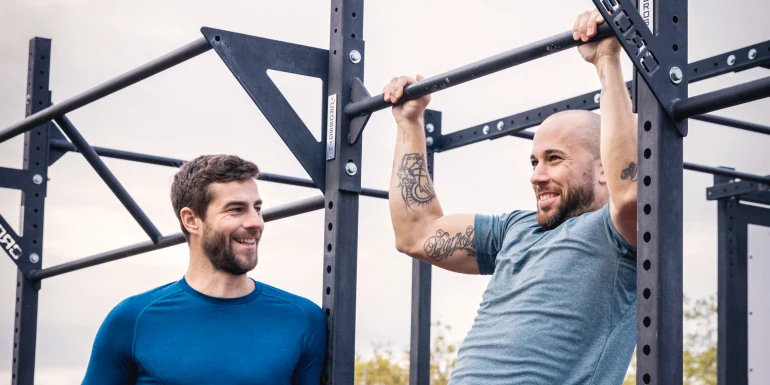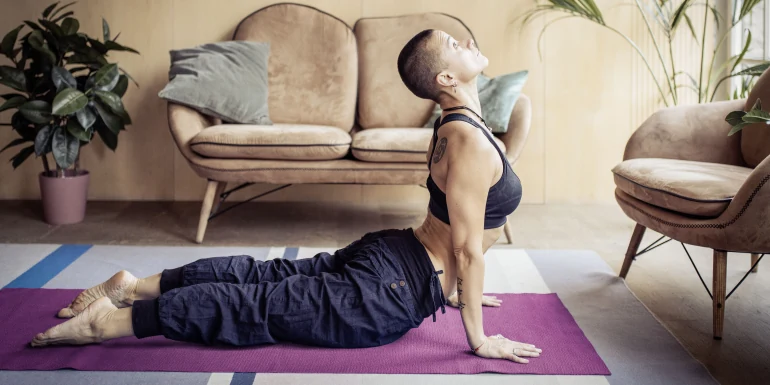
Breaststroke: How to avoid the most common mistakes
For swimming in breaststroke to really benefit your health, you have to adopt the right technique. Read on to find out how to avoid common mistakes and burn more calories.
When we learn to swim as kids, we learn a basic version of the breaststroke. Most of us will not improve much on that technique, and mistakes begin to creep in over the years. For swimming to really be beneficial, though, we should continuously revisit and improve our technique. With the right technique, swimming is a great way to exercise while protecting our joints, avoiding tension in the muscles and even preventing injury.
Breaststroke exercises almost all of the muscle groups in the body. The coordination of head, arms and legs as well as breathing requires a precise technique based on a variety of factors. With this in mind, we have put together a list of helpful tips and tricks:
To avoid causing any pain or tension in your back and neck, you should not keep your head above the water all of the time. Breathe in with your head above the water, then submerge your head between your arms as you perform a stroke, and breathe out under water as you glide forward. Your neck and spine should be aligned, which will help you glide further. Try to make your exhalation under water as long as possible, and look down instead of ahead to reduce water resistance and swim faster. Lift your head above the water to breathe in and repeat. Tip: wear swimming goggles if you use contact lenses or the chlorine irritates your eyes.
From the streamline position, sweep your arms outwards. Try not to open your arms too wide, as this uses more energy. Focus on making smaller circles with your arms. Make sure your hands are pointing down with your palms facing back when sweeping your arms back. Return to the streamline position with outstretched arms, pushing through the elbows. This will reduce water resistance and allow you to swim faster. On the outsweep, don’t pull your arms too far back. You should be able to see the full range of your arm movements, that is, your arms should stay in front of you at all times.
Performing the leg movement correctly is fundamental to developing the right breaststroke technique. The best way to practice the correct leg movement is to use a float, as it allows you to focus on performing just the leg kick. You can also practice out of the water by lying on the ground with a pillow under your belly and your legs slightly lifted. The most important thing is to avoid asymmetric leg motion. Make sure you don’t open your legs too wide but keep them parallel, with your knees close. Avoid doing a scissor-kick. In the thrust phase, drive your legs back into a stretched position to propel yourself forward. In breaststroke, the way you use your feet is very important for generating maximum thrust. You should begin with your legs outstretched, toes pointing back. When you start to bring your legs forward, flex your ankle so that your toes are pointing towards your shin. Then pull your heels as closely to your seat as possible, turn your toes out, sweep your legs outwards and drive them back hard. Tip: avoid pulling your knees in under your belly, as this will create extra drag.
When doing breaststroke, make sure you maintain a good alignment and body tension at all times, as this reduces water resistance. Really extend your arms and legs in the glide phase and try to align your head and body to form a straight line underwater, with your arms firmly by the sides of your head.
Getting breaststroke right takes a lot of practice. However, make sure you don’t overdo it. Swimming experts recommend two to three 20- to 30-minute sessions a week. Try to vary between different swimming styles (breaststroke, back crawl, front crawl) to protect your back and knees.
Burn more calories swimming
Doing breaststroke right not only improves your strength, stamina, flexibility and coordination, but also helps you lose weight. Swimming burns surprisingly many calories due to the water resistance. Depending on the intensity of your training, your weight and the water temperature, you can burn around 300 calories in half an hour of swimming. If you swim regularly, you will also increase your muscle mass, which will in turn burn more calories. By the way, if your aim is to burn as many calories as possible, you should focus on the duration of your breaststroke training rather than the intensity.


Newsletter
Find out more about current health issues every month and get all the information you need about our attractive offers from all Helsana Group companies * delivered by e-mail to read whenever it suits you. Our newsletter is free of charge and you can sign up here:
We did not receive your information. Please try again later.
* The Helsana Group comprises Helsana Insurance Company Ltd, Helsana Supplementary Insurances Ltd and Helsana Accidents Ltd.